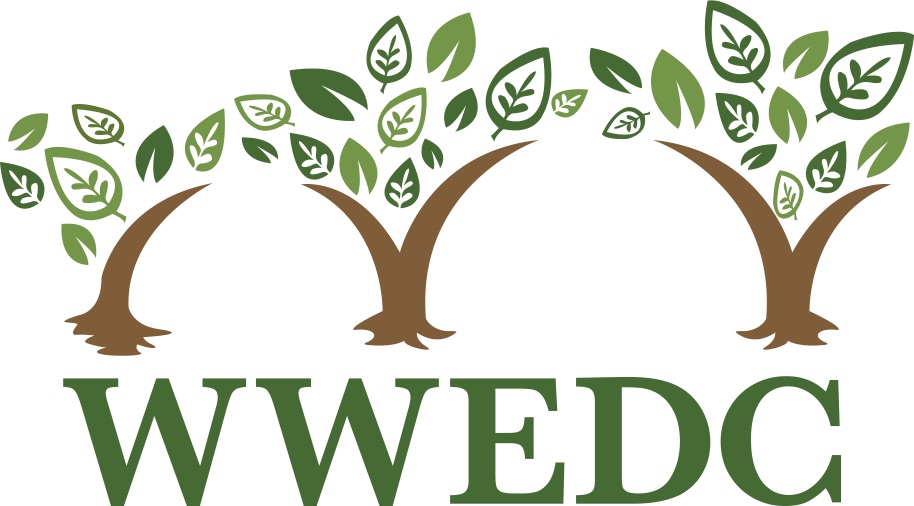Written by Natalie Doan, MSc, PhD candidate at University of Waterloo in Public Health Sciences
Whether that someone is your friend, colleague, patient, student, or loved one, it can be a challenge to decide how you can best support someone with an eating disorder.
The theme of this year’s Eating Disorders Awareness Week 2022 is “everyone has a role to play”. In collaboration with Body Brave, Bulimia Anorexia Nervosa Association, Eating Disorder Support Network of Alberta, Hopewell Eating Disorder Support Centre, National Initiative for Eating Disorders, and Sheena's Place we have developed a conversation guide outlining tips and consideration that we hope you find helpful!
Providing support as a friend of colleague
Before approaching a friend or colleague
- Become informed: learn about the signs and symptoms, risk factors, myths, and where your friend/colleague can go for support (visit nedic.ca).
- Avoid making assumptions: you can’t tell if someone has an eating disorder, or what symptoms they have, based on why they look like.
- Be prepared: your friend/colleague might react with denial or anger when you approach them due to stigma and feelings of shame.
While approaching a friend or colleague
- Choose a private and comfortable setting (e.g., not during a meal).
- Speak from the “I” perspective (e.g., “I am worried about you”).
- Let them know that you are willing to help, while keeping your limits in mind
- Encourage them to seek support if they are ready.
Other tips for supporting a friend or colleague
- Avoid commenting on weight or appearance- theirs, yours, or other’s. Doing so validates unhelpful beliefs about physical appearance being a reflection of a person’s worth. Instead, compliment them on personality, skill, and non-body traits
- Don’t force them to eat and avoid commenting on their food choices. Instead, offer to eat with them or ask them how you can be supportive around food.
- Keep the relationship alive – engage in activities and conversations that are unrelated to food and exercise
- Examine your own attitudes about food, weight, size, and shape. What biases might you have and how might you be conveying them to others? How does these impact your own well-being?
Providing support as an educator
Focus on nourishment
- When teaching about food and nutrition, explain that food provides physical, emotional, social, and cultural nourishment.
- Encourage students to eat a variety of foods that provide them with fuel and make them feel satisfied.
Highlight the complexity of food and eating
- Encourage students to explore how family, culture, identity, and life experiences influences their relationships with food.
- Hold space for diverse experiences and avoid making assumptions.
- Avoid placing moral value on food, or labelling food as “good” or “bad”.
Focus on enjoyment associated with movement
- When teaching physical activity, highlight the importance of moving in a way that makes you feel good, as opposed to moving for appearance-based reasons
Emphasize non-appearance-based changes when highlighting concern
- If you’re worried about a student, speak to behavioural changes you observe (e.g., increased withdrawal and isolation or decreased mood and energy). Avoid commenting on perceived changes in weight.
Provide options when connecting students to resources
- Acknowledge the courage and strength associated with asking for help.
- Provide students with options and ask them where they would like to start.
Providing support as a medical provider
Screen for disordered eating
- Eating disorders are dangerous and prevalent. You will encounter patients with eating disorders so it’s important to screen for them.
- Remember that people of all demographics can develop all types of eating disorders.
- Useful tools include the Screen for Disordered Eating (SDE), SCOFF, and EDE-Q.
Provide validation not judgement
- Eating disorder behaviours can serve as ways of coping with distress – so for your patient, the idea of getting free of the eating disorder can be frightening.
- Using a motivational interviewing approach can help to address ambivalence and build motivation for recovery.
Medically monitor
- Ask about symptom frequency and severity and note any changes.
- Monitor postural vital signs and ask about episodes of dizziness, fainting, chest pain, health palpitations, and GI symptoms.
- Assess for psychiatric risk (depression, anxiety, substance abuse, and self-harm, and suicidality)
Collaborate and refer
- Do not wait until your patient becomes unstable, early intervention results in better outcomes.
- Do not underestimate the severity of an eating disorder. The patient may have a “normal” weight yet may be suffering. People of all body shapes and sizes can experience the detrimental physical and mental health consequences of an eating disorder.
Providing support as a mental health professional
Assess
- Ask about eating and exercise habits (you won’t know unless you ask!).
- Use formal assessments (e.g., SCOFF, EDE-Q) or informal questions (e.g., “what does an average day of eating look like?”).
- Go beyond physical nourishment; explore your client’s social, emotional, and cultural connections to food.
Provide validation, non-judgement and trauma informed care
- Help your client feel safe, understood, and that their distress/experiences are real.
- Don’t make assumptions based on your client’s identity – people of all demographics experience all types of eating disorders.
- Use trauma-informed practices (e.g., providing choice).
- Emphasize strengths and support your client in seeing themselves as more than their eating disorder.
Apply harm reduction principles
- Recognize eating disorder symptoms as coping strategies. It may be impossible or unrealistic for your client to give these up, as they are serving to protect them.
- Support your client in minimizing the harm associated with symptoms.
- Work with your client to develop safer, alternative coping strategies.
Use a weight inclusive approach
- Reflect on your own beliefs and biases about food, bodies, and health
- Learning about frameworks including Body Liberation, Body Neutrality, and Health at Every Size, and apply these to your practice.
- Advocate for office seating that accommodates all bodies.
- Use language that does not apply morality to food, eating, or movement.
Collaborate
- Communicate with physician, dietitians, and external treatment organizations to support your client’s recovery (you don’t need to support your client alone).
- If desired by your client, engage their family members and loved ones, as they can be a vital part of recovery.
- Know your limits and refer to providers who have more training in EDs when necessary.
Providing support as a fitness professional
If you notice undereating, try saying:
- “I’ve noticed that you’re really tired and I’m wondering if you may not be getting enough energy to support your workouts. Are you open to talking about this with me?”.
If you notice overexercising, try saying:
- “I’ve noticed that you’ve been spending a lot of time at the gym lately. Rest is such an important part of working out. Maybe we could talk about incorporating some rest days into your routine?”.
If you notice over-fixation on weight, try saying:
- “I’ve noticed that you’ve been worried about your weight and/or shape. I want you to know that weight does not represent your health. Let’s focus on exercises that improve your strength, flexibility, mobility, and overall well-being.”.
If you notice an interest in supplement and diet products, try saying:
- “I’ve noticed that you’ve been really focused on experimenting with different supplements lately. Let’s talk about some things to look for with supplements – it can be tricky to navigate the many health claims made by companies!”.
Other reminders:
- If you notice that someone is spending more time exercising, less time eating, and is acting less like themselves, voice your concern empathically and non-judgementally.
- Ask how you can support them and learn about additional resources that you can offer them if they’re ready to seek external support.
Receiving support as a person with lived experience
Reach out for help
- Acknowledge the strength it takes to recognize that you are struggling.
- Asking for support makes you stronger and can help restore your willpower to overcome your eating disorder.
- Find a safe space and time to discuss your experience.
- Find a person (or people who you trust).
Talk to someone you feel comfortable with
- Be open to the fact that they might not understand right away.
- Don’t place blame on anyone – eating disorders are no one’s fault.
- They may have questions, and this is normal; try not to be dismissive.
- Involve health care professionals if it feels supportive to your recovery.
Learn about how you can access support
- Visit nedic.ca for information about treatment and support options across Canada.
- Many publicly-funded programs will need a referral; talking to your family doctor is a great place to start.
- There might be a community-based eating disorder organization near you!
Practice self-compassion
- While EDAW can spark hope and celebration of healing, it can also promote comparison. If you find yourself comparing your recovery journey to others’, try to invite self-compassion
- Remember that change takes time, recovery is not linear, and each journey is deeply personal.
For more EDAW resources, visit nedic.ca/edaw/ and https://bana.ca/magazine/.














